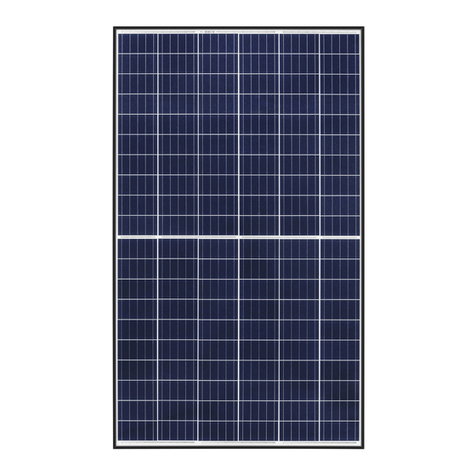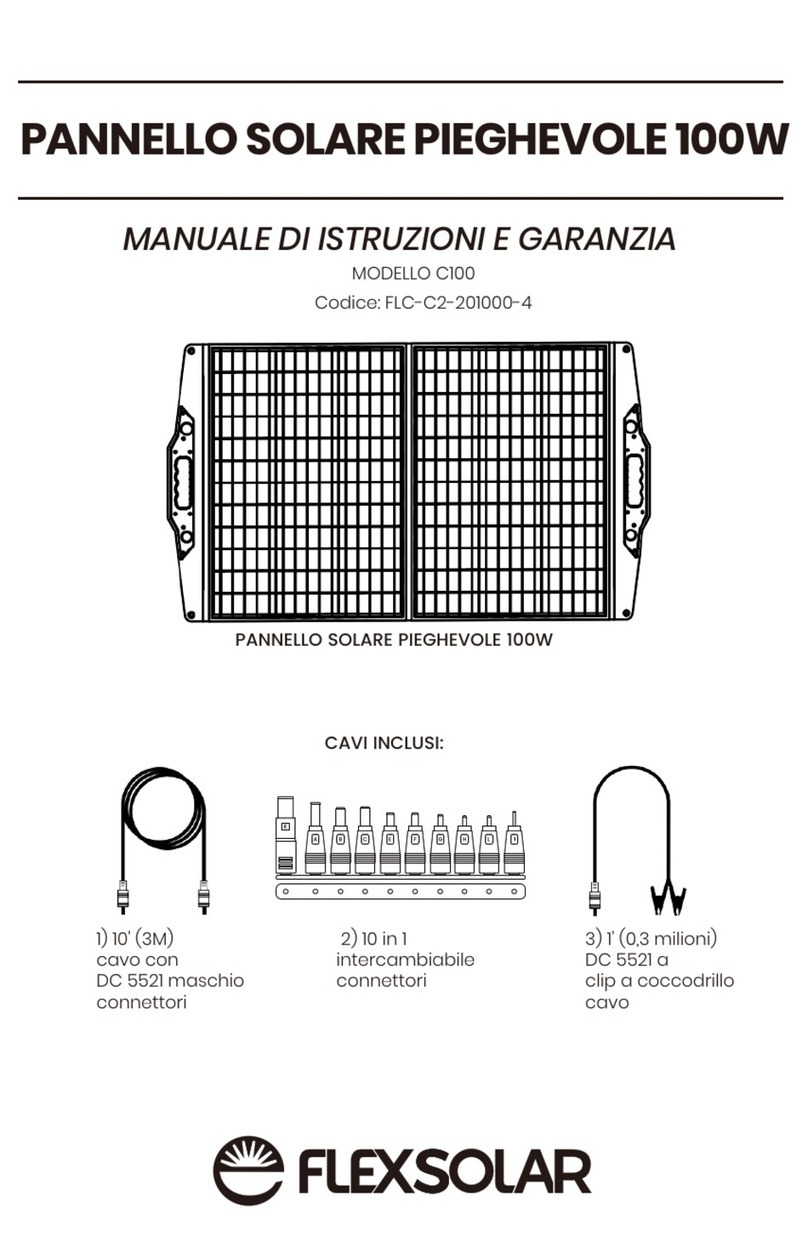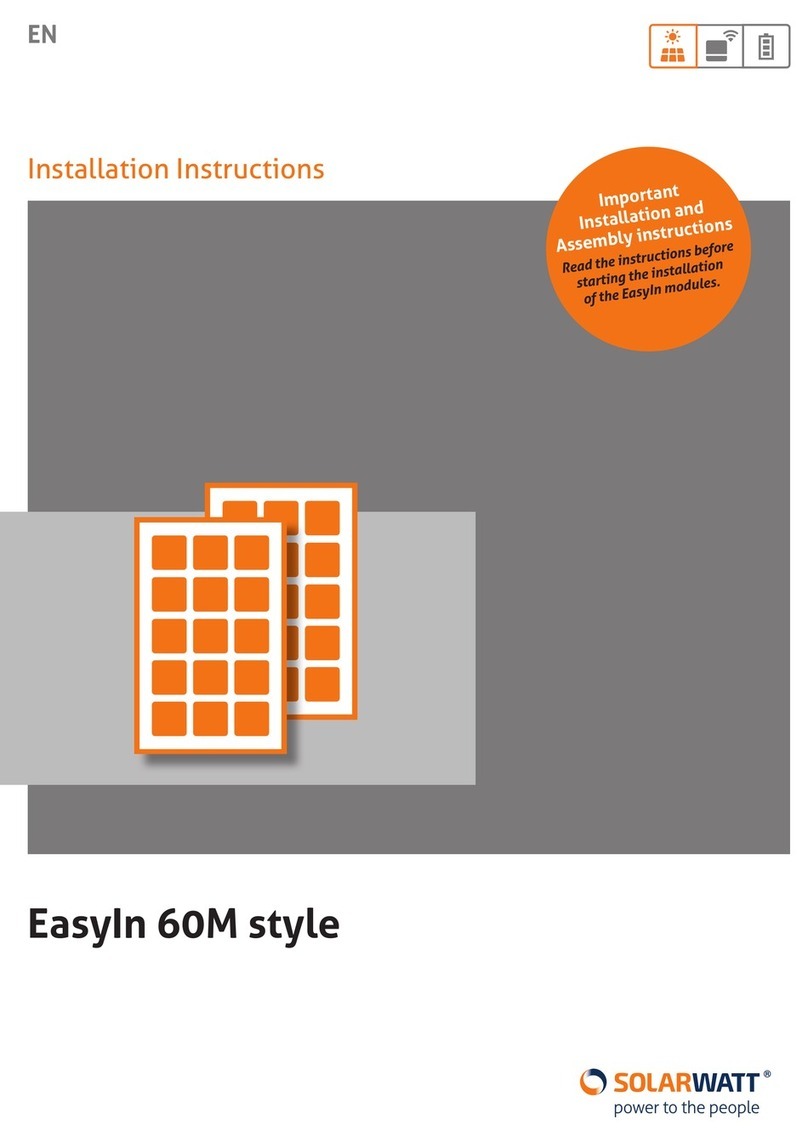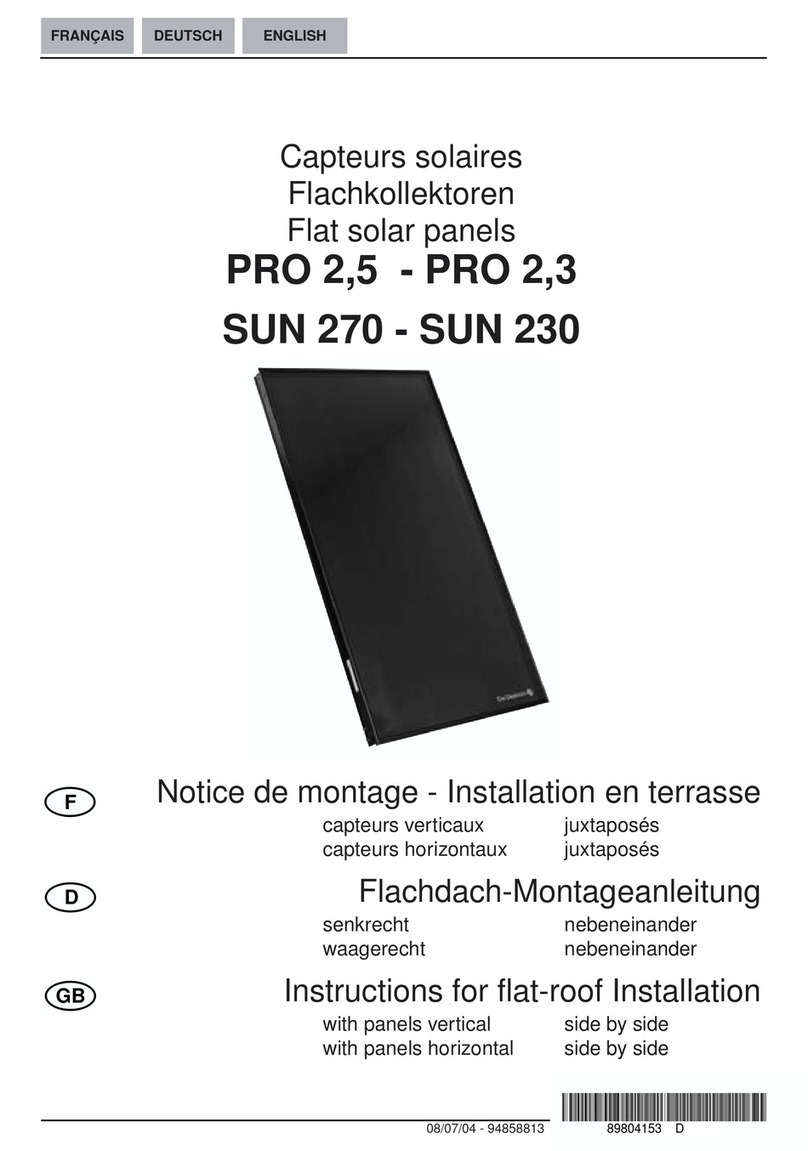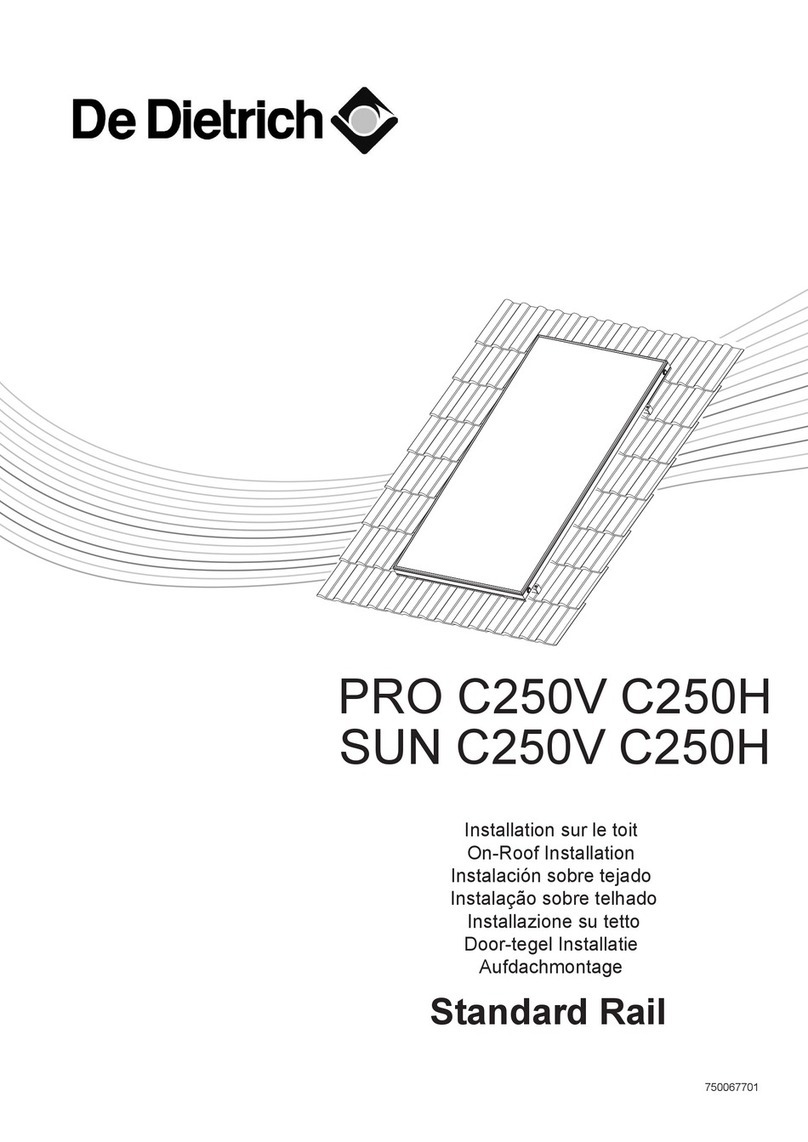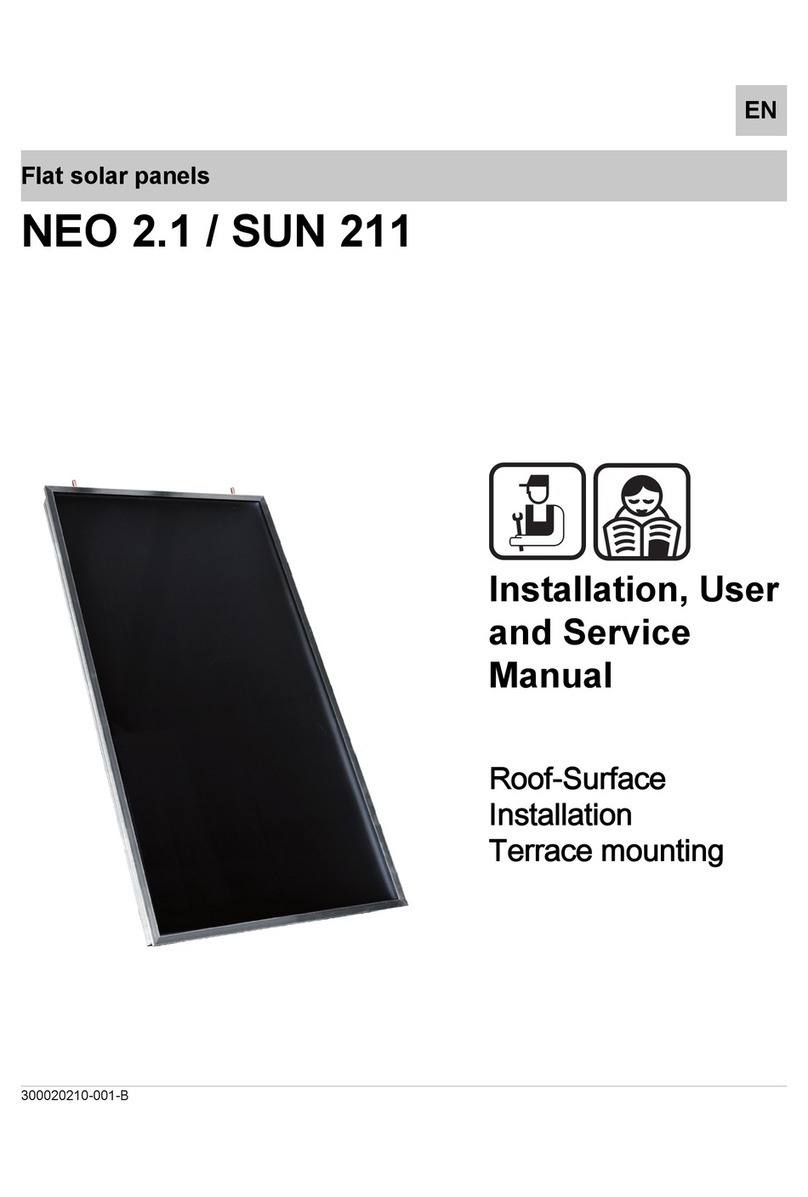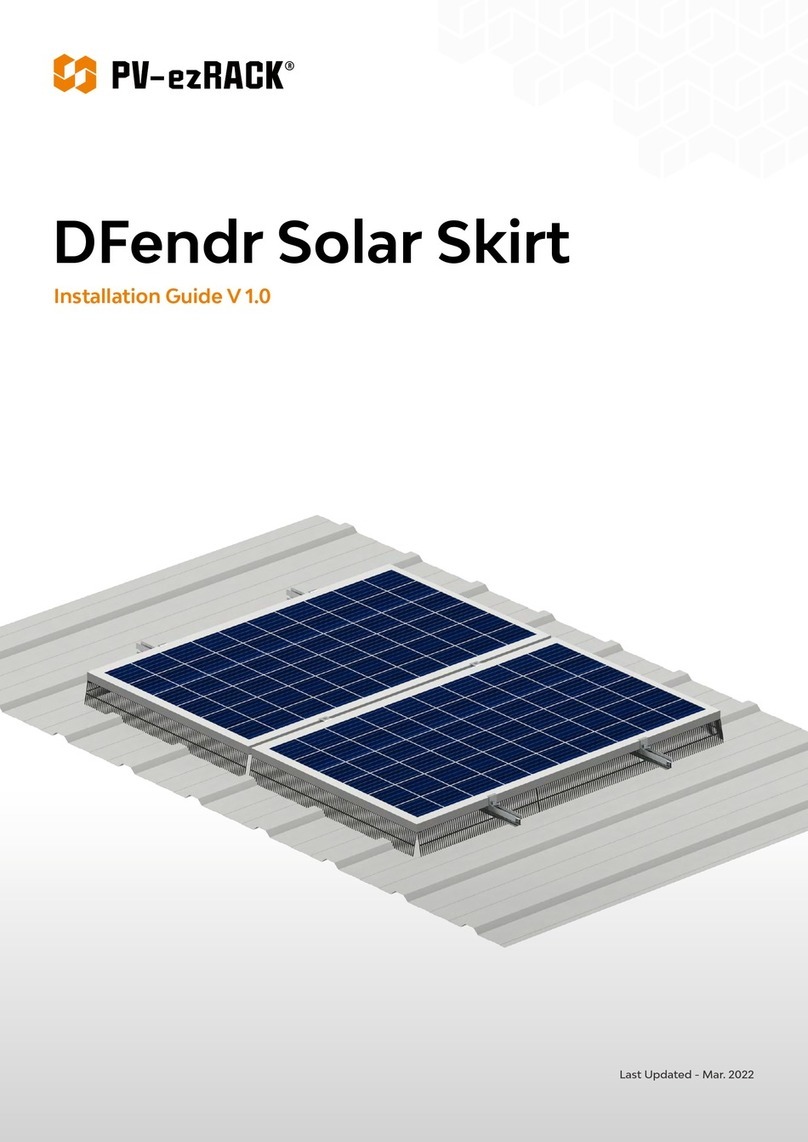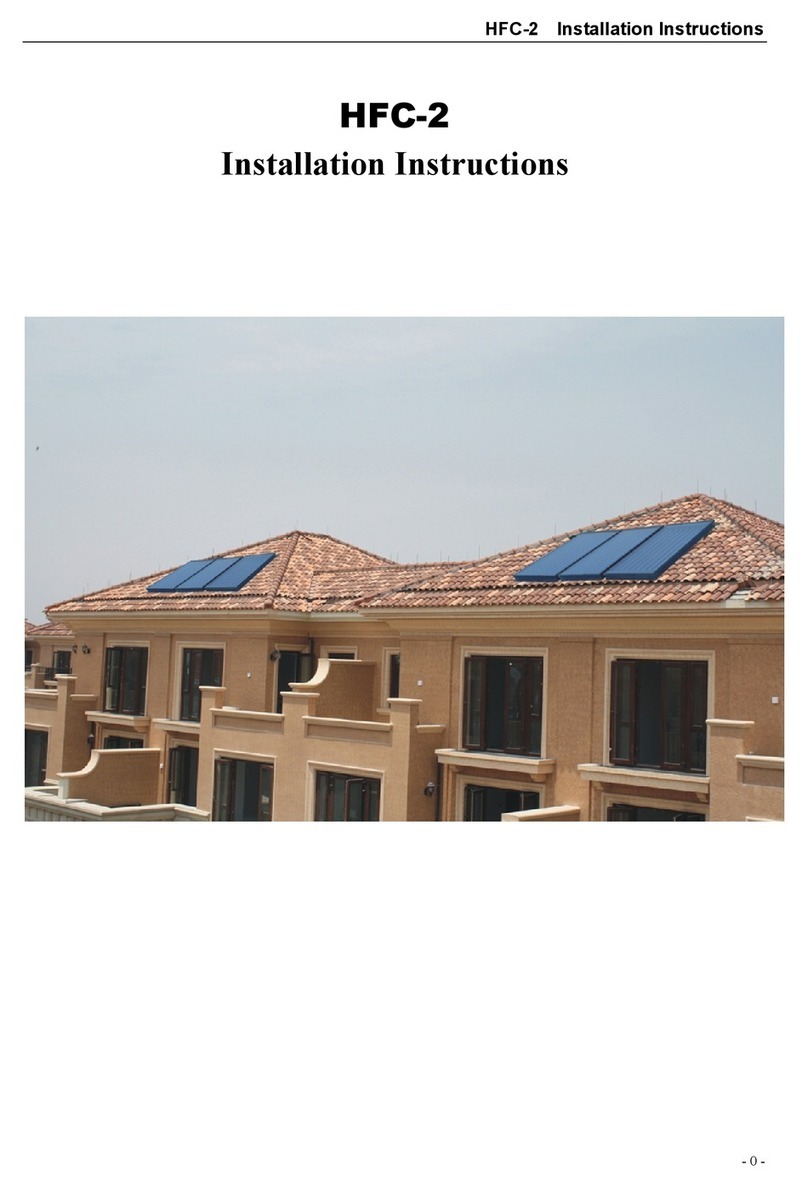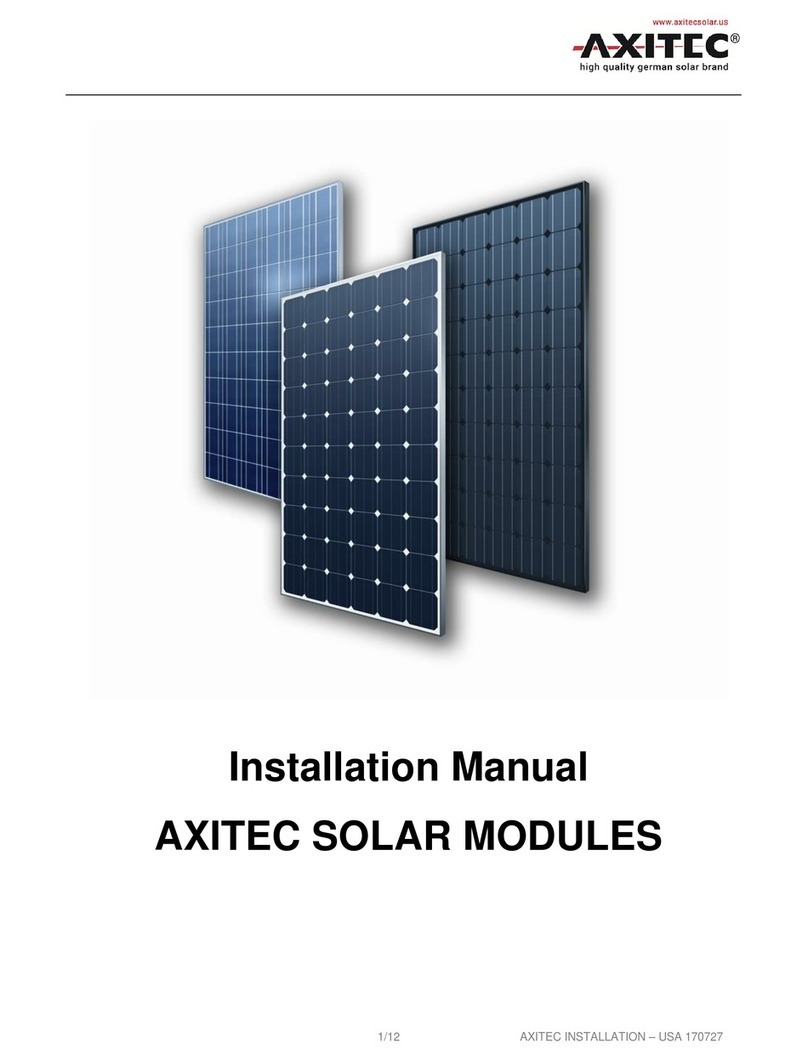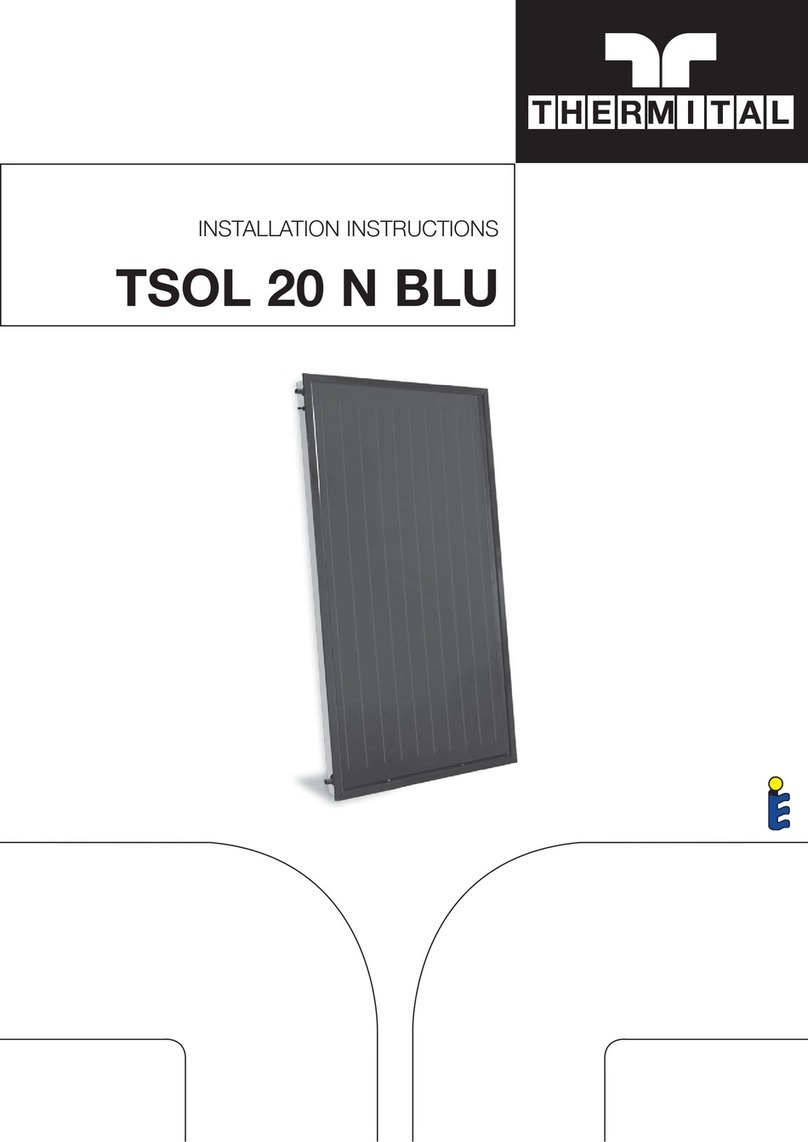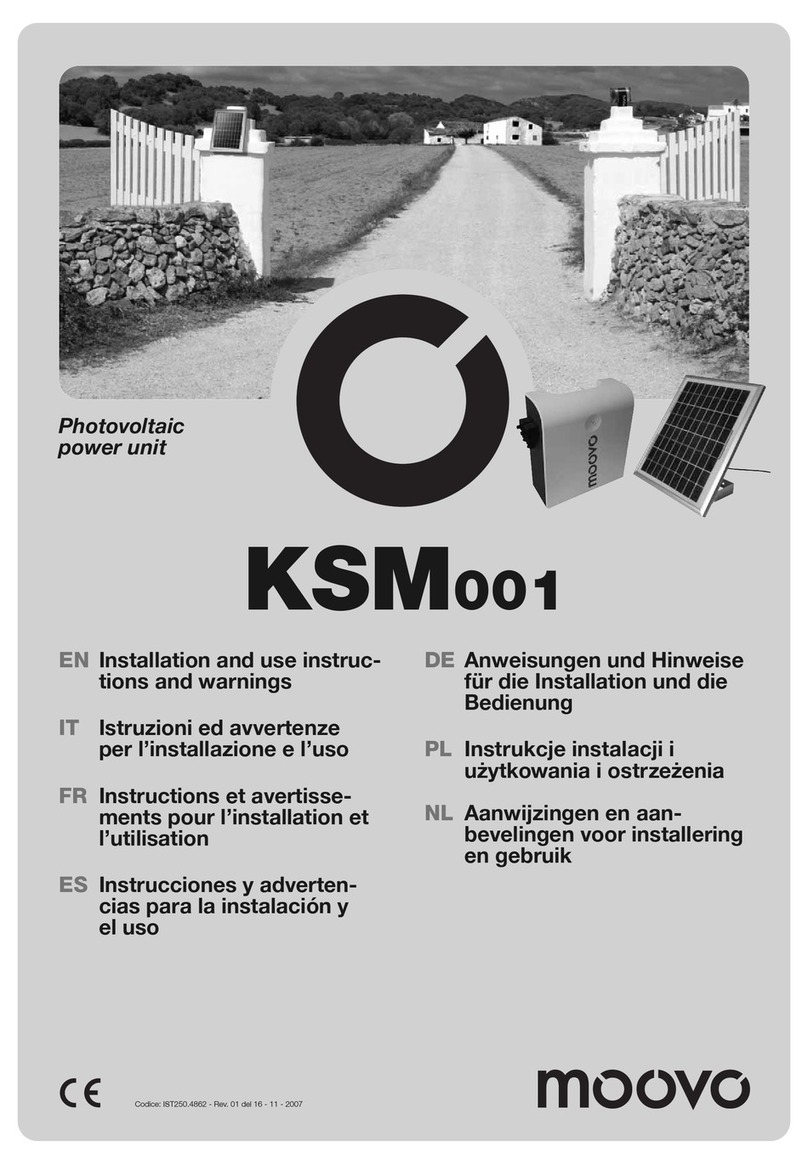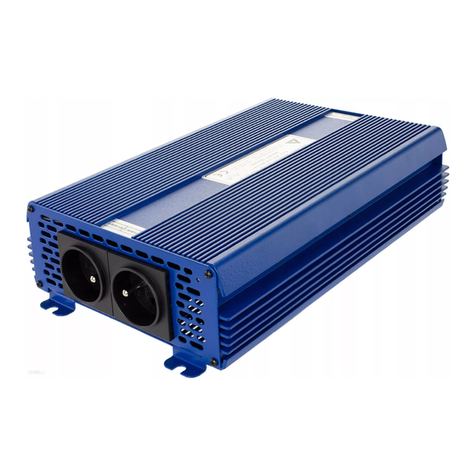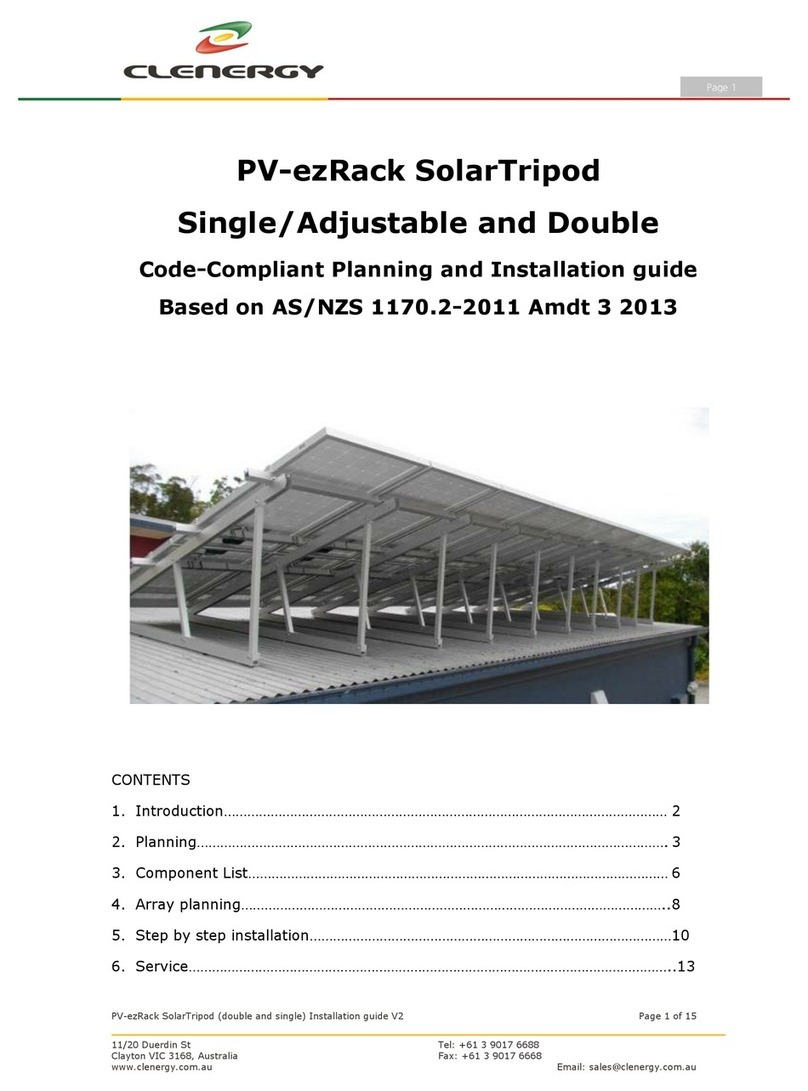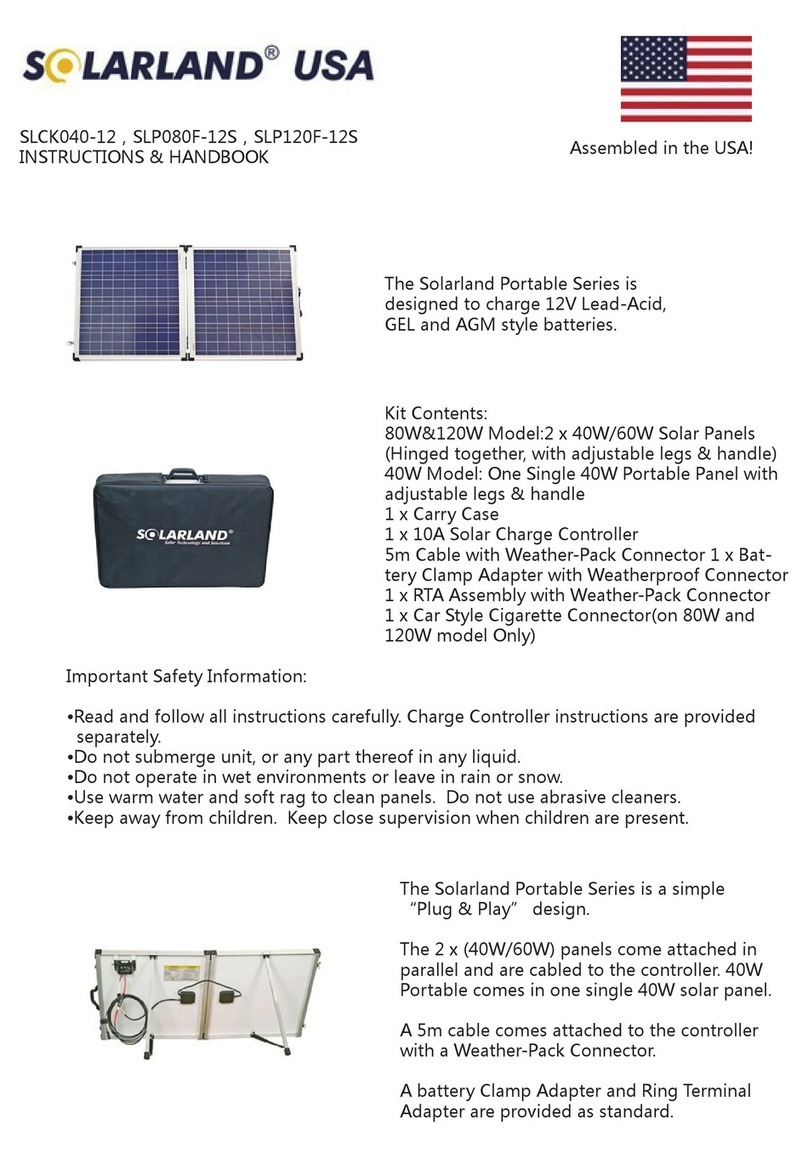
6
1.6 Conservation de la
notice de montage
1.6 Aufbewahrung der
Montageanleitung
1.6 Safekeeping of the
Installation Instructions
La notice de montage et d'utilisation est
à remettre à l'exploitant de l'installation.
Ce dernier est responsable de la
conservation des instructions et assure
leur mise à disposition en cas de besoin.
Die Montage- und Bedienungsanleitung
ist dem Anlagenbetreiber
auszuhändigen.
Dieser übernimmt die Aufbewahrung,
damit die Anleitung im Bedarfsfall zur
Verfügung steht.
The Instructions for Installation and Use
should be handed over to the system
operator.
The operator is then responsible for their
safekeeping so that they can be referred
to in the future if necessary.
1.7 Montage 1.7 Montage 1.7 Installation
Le kit de montage en intégration de toiture
est un système de fixation spécifique aux
capteurs plans PRO 2,3 et SUN 230 et ne
doit être utilisé que conformément à l'Avis
Technique statique correspondant. Le kit de
montage est conçu pour les couvertures de
toit en tuiles standard. En cas de tuiles
particulièrement grandes, adressez-vous à
votre conseiller technique.
Lors de conditions atmosphériques
extrêmes, telles que pluie battante, tempête
de neige, givre et accumulation de neige,
l'humidité peut pénétrer momentanément
sous la couverture de toiture. Les systèmes
de montage en intégration de toiture sont
adaptés aux toits avec une charpente
disposant au minimum d'une protection
(sous-couverture). Le cheminement de l'eau
doit donc aboutir dans la gouttière.
Etant donné que le lattis du toit des
constructions standard est constitué de
lattes de 50x30 mm, le système de montage
a été adapté à ces dimensions. Dans
certains cas, les kits de montage doivent être
adaptés par le maître d'ouvrage. Les
matériaux nécessaires doivent alors être
posés séparément ou adaptés à la
construction. Ce type d'opération doit être
réalisé dans les règles de l'art et en tenant
compte des directives locales. Une utilisation
contraire aux règlements ou des
modifications non autorisées lors de
l'installation ou sur la construction elle-même
dégagent le fabricant de toute
responsabilité. L'installation doit donc être
prise en charge par un spécialiste qualifié. Le
respect des lois, directives, normes et règles
techniques correspon-dantes incombe à ce
dernier (voir aussi chapitre 2).
La charge autorisée sur le toit ne doit en
aucun cas être dépassée. Le cas échéant,
un spécialiste de la statique doit être
consulté au préalable.
Tous les travaux d'ordre électrique doivent
être réalisés par un électricien spécialisé,
dans le respect des normes DTU, des
directives de prévention contre les accidents
et des directives des entreprises d'électricité
locales.
Das ID-Montageset ist als Befestigungs-
system speziell für die Flachkollektoren PRO
2,3 und SUN 230 konstruiert und darf nur
ihrem statischen Nachweis entsprechend
verwendet werden. Das ID-Montageset ist
für Dacheindeckungen mit Standard-
pfannen konzipiert. Bei besonders hohen
Dachziegeln sprechen Sie bitte mit Ihrem
Fachberater.
Durch extreme Witterungsbedingungen wie
Treibregen, Flugschnee, Vereisun-gen und
Schneeablagerungen kann kurz-zeitig
Feuchte unter die Dachdeckung gelangen.
Die Indach(ID)-Montagesysteme sind für
Dächer mit Dachunter-konstruktionen
ausgelegt, die mindestens über eine
Unterspannung (Unterspann-bahn) verfügen
müssen. Die Wasser-führung auf der
Unterspannung sollte dabei in der Traufe
(Dachrinne) enden.
Da die Dachlattung der Standard-Dach-
konstruktion aus 50x30 mm Dachlatten
besteht, wurde das Montagesystem auf
diese Abmessungen optimiert. Unter Um-
ständen müssen die Montagesets den
bauseitigen Bedingungen angepasst wer-
den. Alle hierzu erforderlichen Materialien
sind bauseits zu stellen oder ent-sprechend
anzupassen. Dies darf jedoch nur nach den
allgemein anerkannten Regeln der Technik
und unter Berück-sichtigung der örtlichen
Vorschriften geschehen. Die
bestimmungswidrige Ver-wendung sowie
unzulässige Änderungen bei der Montage
und an der Konstruktion führen zum
Ausschluss jeglicher Haftungsansprüche.
Die Montage muss deshalb von einem
entsprechend quali-fizierten Fachmann
ausgeführt werden. Dieser ist auch
verantwortlich für die Beachtung der
bestehenden Gesetze, Vorschriften, Normen
und technischen Regeln (siehe auch Kapitel
2).
Die zulässige Dachlast des Gebäudes darf
zu keiner Zeit überschritten werden.
Gegebenenfalls ist vorher mit einem Statiker
Rücksprache zu halten.
Alle elektrischen Arbeiten dürfen nur von
einer Elektrofachkraft nach den geltenden
DIN-Normen, VDE-Vorschriften, Unfall-
verhütungsvorschriften und den Vorschriften
der örtlichen Elektrizitätsversorgungs-
unternehmen (EVU) ausgeführt werden.
The roof-integral installation set is designed
specifically as a mounting system for the
PRO 2,3 and SUN 230 flat solar panels and
may only be used in accordance with their
building regulations approval. The roof-
integral installation set is designed for rooves
with standard roof tiles. If the roof in which
the panels are to be fitted has particularly
high roof tiles, please consult your specialist
advisor.
In extreme weather conditions such as
heavy rain storms and snow storms, or when
there is a build-up of ice or snow on the roof,
it is possible for damp to get under the roof
covering. The roof-integral installation
systems are designed for rooves with roof
substructures that at least have a waterproof
membrane fixed underneath. The water
drainage channels on the membrane should
run into the eaves (roof gutter).
Since a standard roof structure uses 50x30
mm roof battens, the mounting system has
been optimised for those dimensions. Under
certain circumstances, the installation sets
may have to be adapted to the specifics of
the building. All necessary materials for such
modifications must be provided by the
installer or adapted as appropriate.
However, any such work must always
conform to the recognised technical
principles and comply with the local
regulations. Use of the equipment for a
purpose other than that for which it is
intended and any unauthorised modifications
made during installation or to the
construction will void any claims for liability.
Installation must therefore be carried out by
an appropriately qualified technician. The
installer is also responsible for compliance
with the applicable legislation, specifications,
standards and technical regulations (see
also Section 2).
The permissible roof load of the building
must not at any time be exceeded. If
necessary, a structural engineer should be
consulted before commencing work.
All electrical work must be carried out by a
qualified electrician and must conform to the
applicable standards, specifications, safety
regulations and the requirements of the local
electricity supplier.
FDGB
